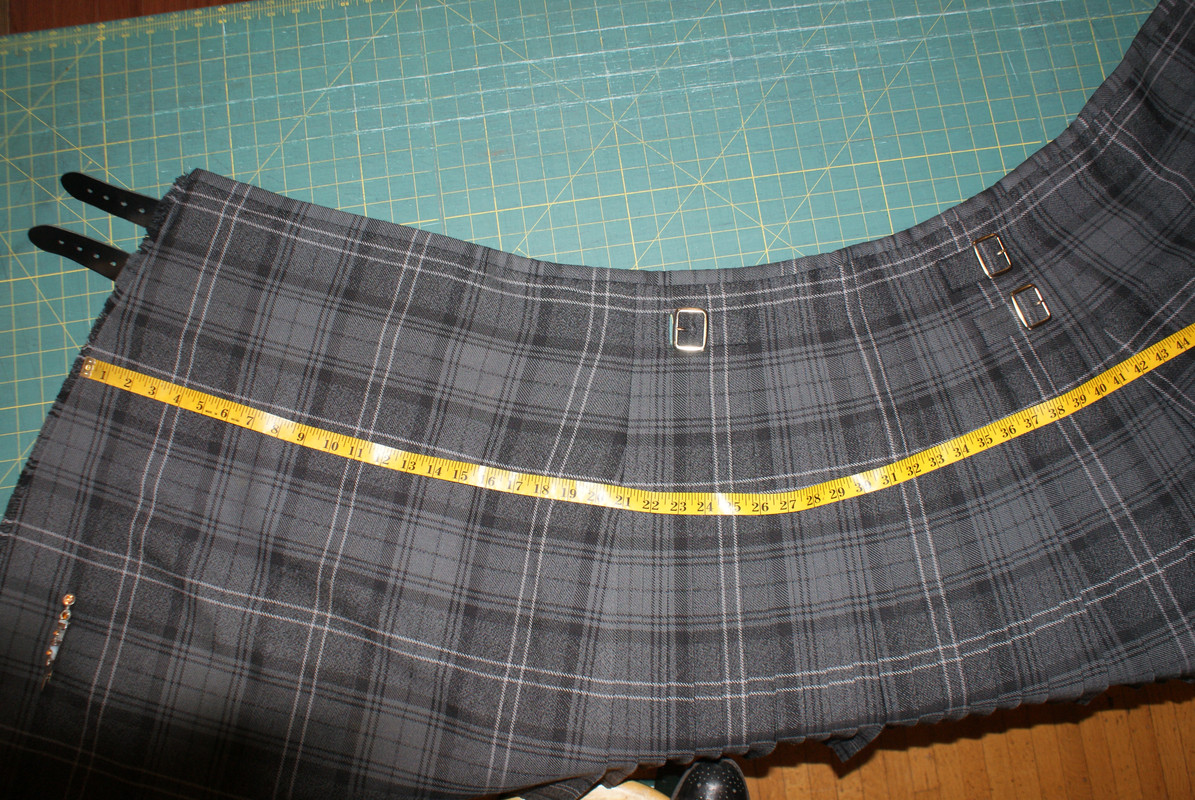X Marks the Scot - An on-line community of kilt wearers.
|
-
22nd March 22, 08:52 PM
#5
The way you measure the hip circumference of an existing kilt is with a tape measure.
At the level of the bottom of the Fell Area, or where the bottom of the pleat sewing ends, measure from the right, outer apron edge, across the outer apron, across the pleats, to the right edge of the under apron. Do not include the under apron.

In the above photo, the hip circumference is 42.5".
As you gave your hip circumference as 35.5". I would expect the measured hip size to be around 36.6" and 37.6"
As all the difference between the hip circumference and the waist circumference is taken up in the pleats, the difference between the length across the pleats at the line of the hip circumference and length across the pleats at the waist circumference should be very close to the difference between your waist measurement and your hip measurement. Waist equal to, or plus 1 inch and hips equal to or up to 2 inches larger.
This can perhaps be illustrated with this small wooden model.
You can see that the apron should fall straight down from the belly in front. If you have a belly you take the hip measurement simulating the apron falling straight down from the belly by pulling the tape out, away from your front.
The edges of the apron are wider at the hips than at the waist so that the apron edges also fall straight down at about where the side seams of trousers would be.
That there is some portion of the kilt above the top straps. This is called the "Rise".
And that the buttocks stick outward further than the nape of the spine. Above the line of the hips is called the "Fell Area" and is where all the tapering and shaping of the entire kilt are done. Below the line of the hips the pleats should fall straight down.
I would not expect this shaping to be as nice on a casual kilt as would be expected on a custom kilt. But if the kilt is made even close to the given measurements I would not expect to see such pronounced shower curtain folds.
Last edited by Steve Ashton; 22nd March 22 at 08:54 PM.
-
The Following 2 Users say 'Aye' to Steve Ashton For This Useful Post:
 Posting Permissions
Posting Permissions
- You may not post new threads
- You may not post replies
- You may not post attachments
- You may not edit your posts
-
Forum Rules
|
|
















Bookmarks